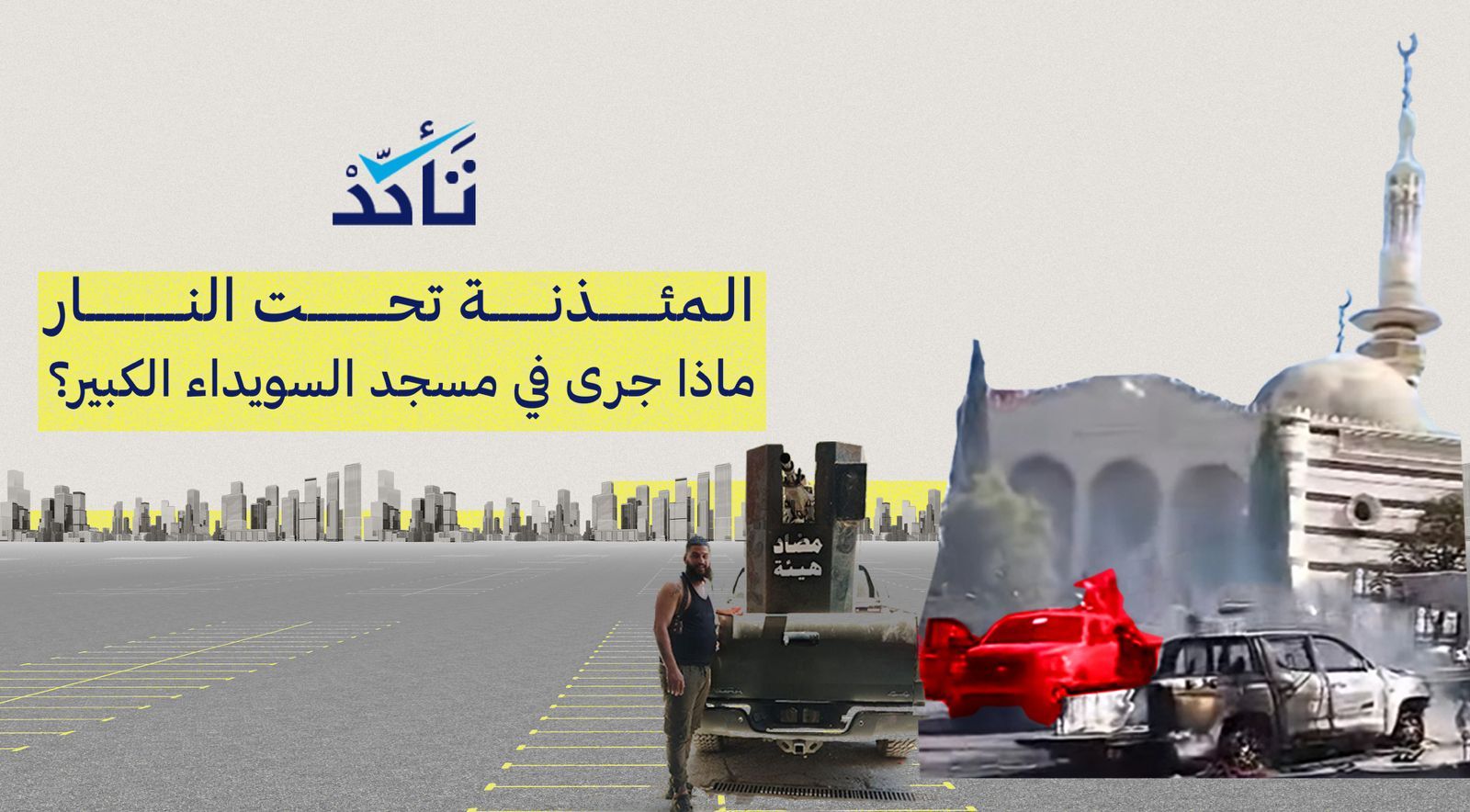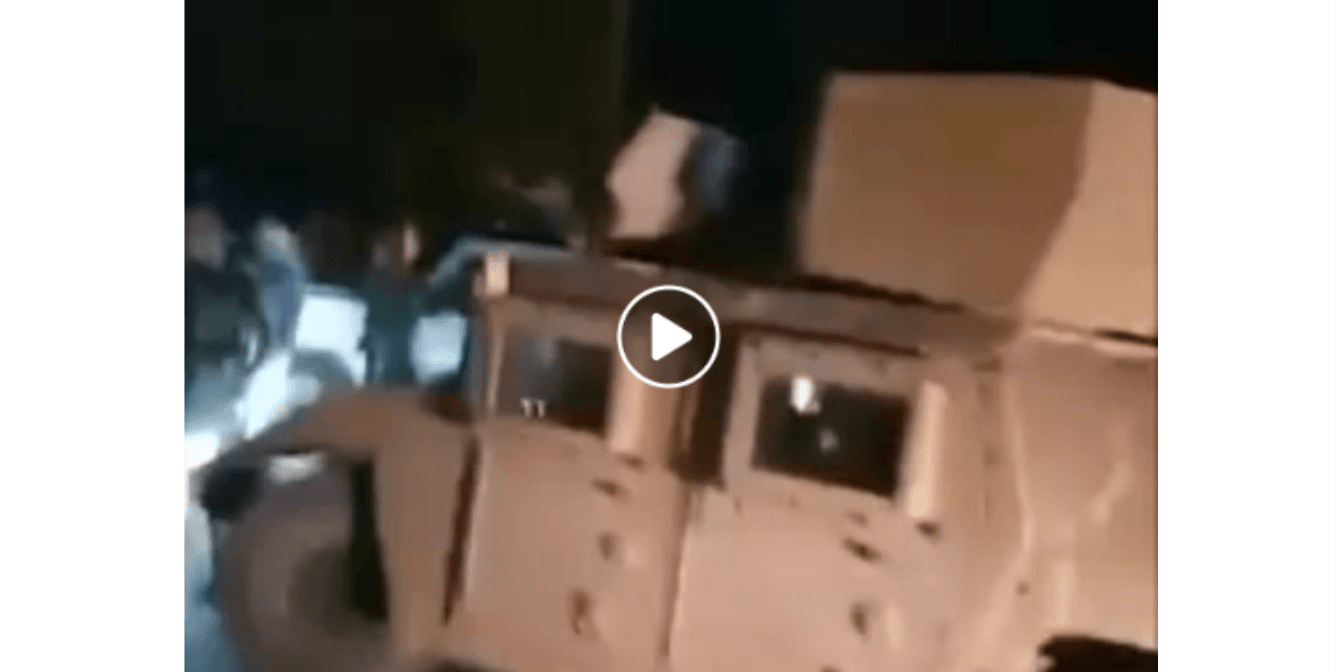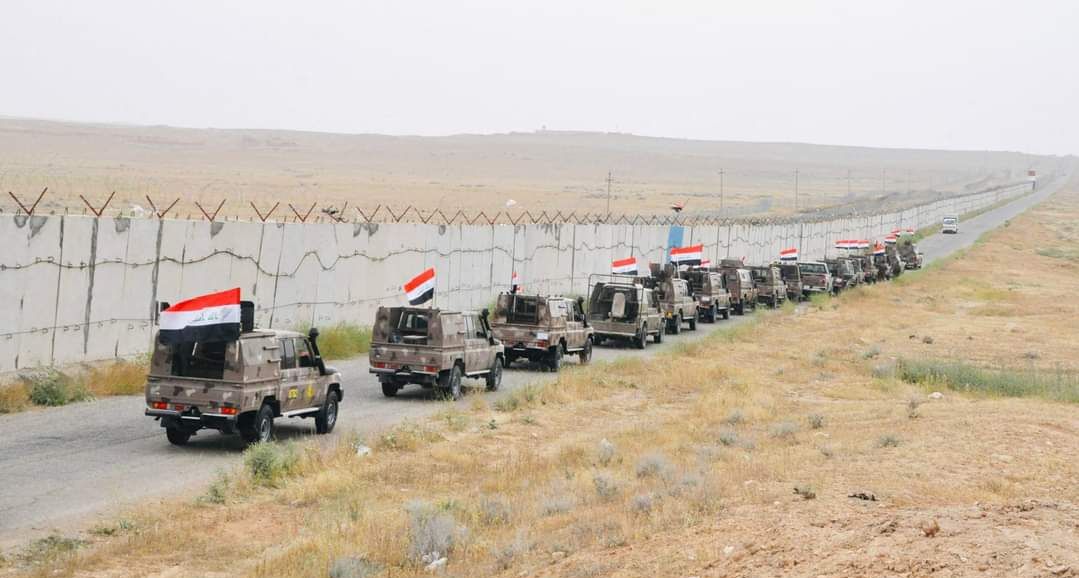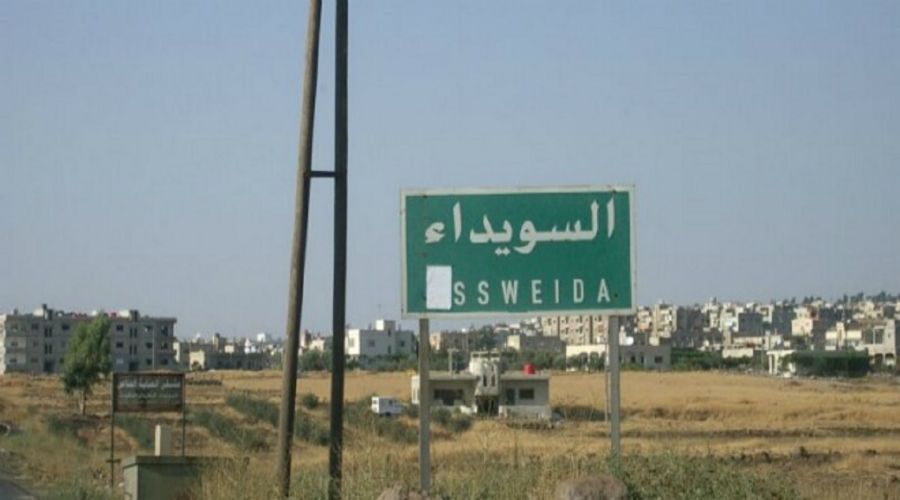
The Minaret Under Fire: What Happened at Al-Suwayda Grand Mosque?
On Wednesday, 13 August 2025, the local Facebook page (Al-Lajat 24) published a video showing armed men attacking a mosque in Al-Suwayda. The footage depicts a gathering of people and vehicles around the mosque, some filming the scene, while a car equipped with a mounted machine gun repeatedly fires at the minaret, causing visible damage to its upper section.
The video’s release sparked widespread debate over the identity of those involved, the motives behind the attack, and the timing of its publication.
Following the clip’s circulation, Verify Syria confirmed its authenticity through visual analysis, establishing that it showed Druze gunmen attacking Al-Suwayda’s Grand Mosque. According to the platform’s correspondent, the incident occurred on 17 July—during a wave of violence and abuses in the province at the time. Recent photographs obtained by (Verify-Sy) also show an Israeli flag still painted on the mosque’s wall.
The Druze Justification
Supporters of local factions in Al-Suwayda claimed the mosque’s minaret was targeted because a sniper had taken position inside it. They framed the incident as part of “city-clearing” operations aimed at forcing the Syrian army and public security forces to withdraw.
According to these accounts, a group of Druze sheikhs, community leaders, and young men intervened to prevent further damage and protect the mosque. Separate videos show Druze sheikhs securing the mosque and its imam, chanting slogans rejecting sectarianism and promoting unity between the Arab tribes and the Druze community, along with pledges to protect the tribes “as one people of the country.”
When (Verify-Sy) contacted local sources, there were no clear details about the mosque and its imam’s fate. Some claimed he was unharmed and remained in Al-Suwayda, while others said he had left the city. Both the attack footage and the video showing sheikhs securing the mosque were confirmed to date back to 17 July 2025. On 13 August, additional videos emerged showing bullet damage to the minaret and Israeli symbols painted on the mosque’s walls.
Verify-Sy concluded that the sniper claim lacked credibility. The footage shows faction members moving freely around the mosque without coming under fire. Moreover, Syrian government forces had already withdrawn from the province early on 17 July, according to government fighters cited by AFP.
This was corroborated by Rayan Ma’rouf, director of Al-Suwayda 24, who wrote in a Facebook post at 9:36 a.m. that same day that he had spent two hours walking through the city without encountering any snipers or entrenched forces. He reported the city was entirely free of both government troops and tribal fighters.
Who Chose the Timing of the Video’s Release?
Verify-Sy asked this question to Al-Lajat 24, the original source of the footage. The page’s administrators said the video had been sent by a man named Sumer Abu Khair, who boasted about the shelling as he filmed it.
Screenshots of the messages, shared with Verify-Sy, show Abu Khair first contacting the page on 13 August 2025 at 8:19 a.m. Damascus time. He sent a provocative text message, followed by the mosque attack video. When the page administrator ignored him, Abu Khair responded with insults and urged them to post the footage. He then sent another video showing the mutilation of a dead body and threatened to send further clips from the Maqous neighborhood—formerly home to Arab tribes in Al-Suwayda—using sectarian language and openly admitting to attacking tribal property.
The Perpetrators and Their Allegiances
Eyewitnesses, displaced from the area after the incident, told (Takkad) that the neighborhood had been emptied of residents and filming was impossible due to the control of sectarian-aligned local factions. These groups confiscated residents’ phones and possessions, restricting documentation to their own channels.
Witnesses identified the faction responsible as one led by Ashraf Jammoul, naming the gunman on the mounted weapon as Ghaith Al-Qantar. A review of Jammoul’s social media showed numerous posts glorifying the Israeli occupation stance and Prime Minister Benjamin Netanyahu—whom he described as “the new leader of the Middle East”—as well as praise for Druze spiritual leader Hikmat Al-Hijri.
On Jammoul’s page, videos appear showing the same vehicle used in the mosque attack—a grey, second-generation Toyota Tundra equipped with a heavy machine gun known locally as a “Committee Buster.” Other clips link the vehicle to Ghaith Al-Qantar.
A comparison between the vehicle in the targeting footage and earlier videos posted on Ghaith al-Qantar’s account showed a match in both model and gray color. The vehicle was identified as a second-generation Toyota Tundra fitted with a heavy machine gun known locally as an “anti-body.” While this provides circumstantial evidence of the shooter’s identity, it could not be definitively confirmed due to the lack of clear facial features in the video.
Fate of the Imam of Al-Suwayda Grand Mosque
Verify Syria identified the sheikh appearing in a video posted by the Al-Rasid page, which showed Druze sheikhs providing protection for the mosque and its imam, as Sheikh Fawaz al-Muhammad, the imam of Al-Suwayda Grand Mosque. A source close to his family said he was not from Al-Suwayda province but from Al-Bweida/Khirbat al-Shayyab in rural Damascus, and that contact with him had been lost since 22 July 2025.
According to Sheikh Mohammad al-Baddah, imam of Maqous Mosque, Sheikh Fawaz al-Muhammad was detained at Al-Qanawat School by Druze factions in the same neighborhood where Sheikh Hikmat al-Hijri resides with his wife, two daughters, and son-in-law. He was released only a few days ago, while his son-in-law remains held as a hostage. Al-Baddah explained that the imam cannot currently make statements or share details about the incident until his son-in-law is freed, fearing reprisals. He stressed that Al-Suwayda is now under the control of al-Hijri and his armed factions, who impose a de facto repressive and intimidating rule over residents in general, and the Arab tribes in particular.
The witness added that he met Sheikh Fawaz two days earlier in the Sayyida Zainab area, where the imam is now living with his family in his hometown of Al-Bweida. Attempts by Verify-Sy to contact Sheikh Fawaz went unanswered up to the time of preparing this report.
Another source close to the imam’s family, who requested anonymity, confirmed that he had been arrested along with several family members by Druze factions, and also confirmed his release a week earlier together with his wife and two daughters, while his son-in-law remained in detention. This account was later corroborated by Khaled al-Muhammad, the imam’s son, who said he was currently outside Syria but provided no further information.
Al-Maqous Mosque Subjected to a Similar Attack
Mohammad Oqla al-Baddah, imam of the Omar ibn al-Khattab Mosque—one of the Sunni mosques in Al-Suwayda—said that his mosque had also been subjected to a similar assault. He explained that he had not publicly announced the incident due to the lack of photographic evidence. He also reported that the Al-Hroubi Mosque, located in its namesake neighborhood, had been vandalized and targeted. He provided Verify-Sy with a three-minute video filmed on 16 July showing the damage caused by the attack. The platform chose not to publish the footage due to the inability to verify the perpetrators and to avoid potential incitement.
Verify-Sy was unable to independently verify the imam’s account or confirm whether the Omar ibn al-Khattab Mosque in Maqous was attacked. However, his statements correspond with messages sent by Sumer Abu Khair to the page that published the Grand Mosque attack video.
According to al-Baddah, the assaults took place on 17 July 2025. He denied the presence of any sniper inside the minaret, stating that the targeting occurred after the withdrawal of Syrian army and public security forces.
Responding to the narrative that justified the attack by claiming a sniper was inside the minaret, al-Baddah argued that if such a sniper had been present, no one would have been able to stand in the mosque’s square or surrounding streets. He said the “sniper” claim is regularly used to justify attacks on minarets and mosques in the province, adding that this particular attack was sectarian and celebratory in nature, carried out after the departure of Syrian forces to display power and dominance and to humiliate members of the Arab tribes.
Response of the Higher Legal Committee’s Media Office
Verity-Sy contacted the media office of the Higher Legal Committee, which was formed by the spiritual leadership of the Druze community and serves as the de facto authority in Al-Suwayda, via the committee’s official Facebook page, to request comment on the incident.
We asked about the committee’s position on the mosque attack and the justifications being promoted, as well as its response to testimonies collected about the detention of the Grand Mosque imam and his family prior to his release, with his son-in-law still in captivity, and about the attack on Maqous Mosque.
The committee’s media office responded by reinforcing the same justifications, stating that “portraying the mosque incident as an attack is a falsification of reality” and that the incident was “an exchange of fire with a sniper from those who attacked Al-Suwayda and committed massacres against civilians.” The office offered to provide Verify-Sy with recent footage showing the current state of the mosque along with further information, but as of the time this report was prepared, the platform had not received it.
A Managed Media Operation
Since the collapse of the Assad regime, Al-Suwayda has experienced heightened insecurity and the growing influence of local factions loyal to the Druze spiritual leadership. Mutual accusations between these factions and Arab tribes have included allegations of sectarian and tribal-based abuses.
In the absence of independent oversight, incidents targeting religious sites have increased—sometimes justified as responses to “snipers,” other times staged to demonstrate control. The Higher Legal Committee and armed factions maintain near-total control over local documentation, restricting filming to their own media channels.
Videos of such incidents have been released in a staggered manner over the past month, raising questions about timing and intent. The attack on the Grand Mosque was published just two days after footage surfaced of the Prophet Dawood shrine burning in Al-Majdal village, and shortly after videos emerged showing Syrian regime forces storming Al-Suwayda National Hospital and executing volunteer engineer Mohammad Bahsass.
These patterns suggest a coordinated media strategy, deliberately timed to inflame tensions and serve the interests of those controlling the local narrative—while blocking access to neutral, comprehensive reporting.

تضليل
المحتوى الذي يتضمن مزيجاً من الحقائق والأكاذيب.





